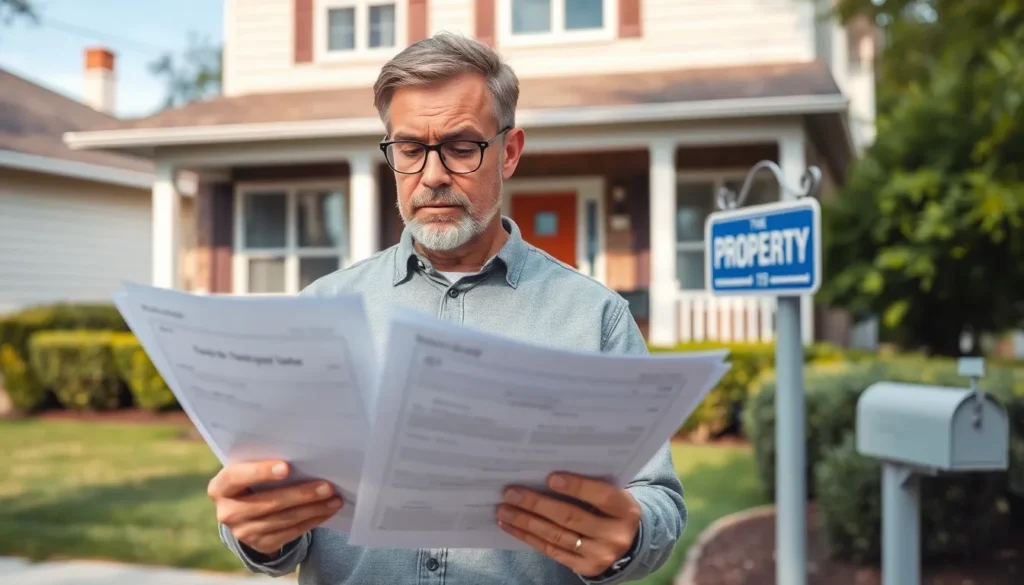Table of Contents
ToggleIn a world where clutter seems to multiply like rabbits, organizing a house can feel like a Herculean task. But fear not! With a sprinkle of creativity and a dash of determination, transforming chaos into calm is entirely possible. Imagine walking into your home and feeling a sense of peace instead of dread. Sounds dreamy, right?
Benefits Of Organizing Your House
Organizing a house reduces stress and anxiety. A clutter-free environment promotes mental clarity. People often find it easier to focus and be productive in tidy spaces. Home organization encourages efficient use of time. Searching for misplaced items becomes a thing of the past.
Increased functionality marks another benefit. A well-organized home allows for better flow between rooms. Each area serves its purpose effectively, enhancing everyday activities. A designated spot for every item minimizes confusion and congestion.
Enhanced aesthetics play a significant role as well. An organized home looks inviting and well-maintained. Visual appeal contributes to a sense of pride for homeowners and guests alike. A tidy space often leads to improved mood and greater satisfaction.
Maintaining organization also fosters positive habits. Consistent decluttering encourages mindfulness about belongings. Individuals develop a routine that prioritizes keeping spaces clean and orderly. These habits contribute to long-term satisfaction and improved well-being.
Increased space utilization represents another advantage. Organized homes maximize storage solutions. Homeowners can utilize every nook and cranny efficiently. They can avoid overcrowding, which often leads to frustration and discomfort.
Financial benefits also arise. An organized house reduces the likelihood of purchasing duplicate items. People save money by knowing exactly what they own. Organization can lead to better decision-making regarding purchases and acquisitions.
Steps To Organize Your House

Organizing a house involves a series of strategic steps that lead to a clutter-free space. Following these steps helps create harmony and functionality in a home.
Decluttering Your Space
Decluttering serves as the first essential step. Begin by dedicating time to go through belongings and identifying items no longer needed. Donate, recycle, or discard unnecessary objects, creating more space for the essentials. To tackle overwhelming areas, focus on one room or area at a time. This targeted approach prevents burnout and encourages progress. Completing this step promotes clarity and makes the organization process more manageable.
Categorizing Items
Categorizing items follows decluttering, allowing for more efficient organization. Group similar items together, such as books, clothes, and kitchen supplies. This not only simplifies the organizing process but also aids in locating items quickly later. Utilize clear bins or labeled boxes for each category, enhancing visibility. Consider placing frequently used items within easy reach while storing seldom-used items in less accessible spaces. Creating specific categories helps maintain order and encourages mindful ownership.
Organizing Each Room
Organizing each room requires a tailored approach based on its specific function. For living areas, consider multifunctional furniture to maximize space. In bedrooms, utilizing under-bed storage can free up valuable floor space. The kitchen benefits from organizing cupboards and drawers by placing similar items together, such as utensils and cookware. Each room’s organization plan should reflect the needs of daily life, promoting efficiency. Regular maintenance ensures the space remains clutter-free and functional over time.
Tips For Maintaining Organization
Maintaining organization requires daily commitment and strategic storage solutions. It solidifies the progress achieved during the initial organization phase.
Daily Routines
Establishing daily routines simplifies maintaining an organized home. Incorporate small tasks into each day’s schedule, such as making the bed or putting away dishes. Prioritize decluttering surfaces, ensuring items have designated locations. By spending just 10 minutes each day on tidying, individuals can prevent messes from accumulating. Integrating this practice fosters mindfulness about belongings, promoting a sense of control over one’s environment. Create a checklist to track daily tasks, helping to build good habits over time.
Storage Solutions
Implementing effective storage solutions maximizes space and enhances organization. Utilize vertical storage options like shelves or wall-mounted racks for optimal use of space. Consider clear bins for easy visibility of contents, aiding in quick retrieval and keeping track of items. Under-bed storage serves as an excellent option for seasonal clothing or extra linens. Labels expedite the process of finding necessary items, ensuring everything remains in its proper place. Prioritizing multifunctional furniture, such as ottomans with storage or coffee tables with drawers, adds versatility and efficiency to living spaces.
Common Challenges And Solutions
Organizing a home presents various challenges. Many people struggle with emotional attachments to possessions. To address this, creating a clear decluttering plan proves beneficial. Establish criteria for what to keep and what to donate, which simplifies decision-making.
Another challenge involves limited storage space. Utilizing vertical storage solutions, such as wall shelves or over-the-door organizers, maximizes available area. Incorporating multifunctional furniture, like ottomans with storage, enhances functionality while maintaining aesthetics.
Disorganization often leads to time management issues. Setting specific categories for each room aids in organizing items efficiently. Develop a checklist or system that ensures everything has a designated space.
Maintaining organization can become arduous after the initial effort. Implementing daily routines that incorporate quick tasks prevents clutter from accumulating. For example, dedicating 10 minutes each day to reset spaces can maintain the home’s organization.
Family involvement presents its own set of challenges. Encouraging all members to participate in maintaining organization fosters a sense of responsibility. Assigning tasks based on individual spaces or belongings promotes accountability.
Overcoming procrastination is crucial for staying organized. Breaking larger tasks into smaller, manageable steps helps reduce overwhelm. Tackle one drawer or shelf at a time rather than trying to organize everything at once.
Developing a storage system without clear labels can create confusion. Labeling bins or boxes contributes to swift access to items. Choosing color-coded labels for different categories aids in visual recognition and enhances efficiency.
Each challenge has practical solutions that lead to a more organized living space. Embracing these strategies empowers individuals to create and sustain an organized home environment.
Transforming a cluttered home into an organized sanctuary is within reach for anyone willing to put in the effort. The journey might seem daunting but the rewards are immense. A well-organized space not only enhances daily living but also nurtures a sense of peace and clarity.
By adopting strategic organization methods and committing to regular maintenance, individuals can create environments that reflect their needs and lifestyle. Embracing the process with creativity and determination leads to lasting change. With each step taken towards organization, the benefits of reduced stress and improved functionality become increasingly evident. It’s time to take that first step and enjoy the satisfaction that comes from a beautifully organized home.






